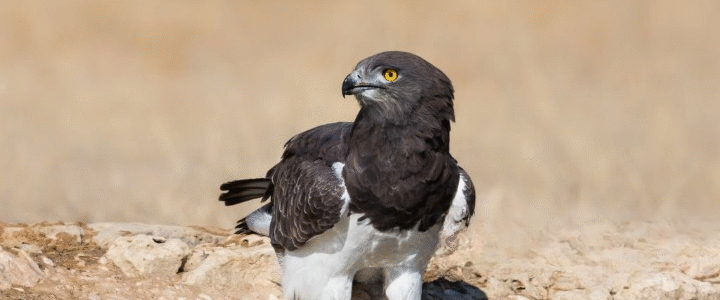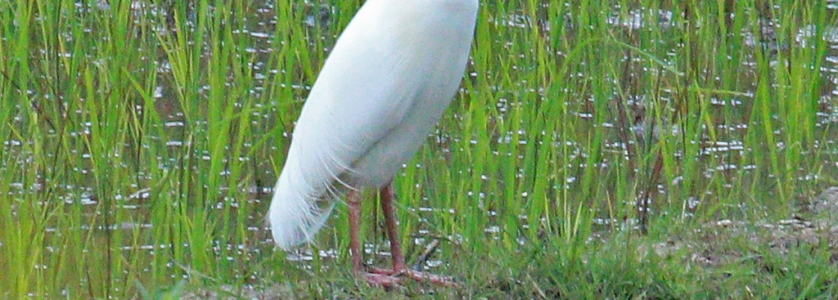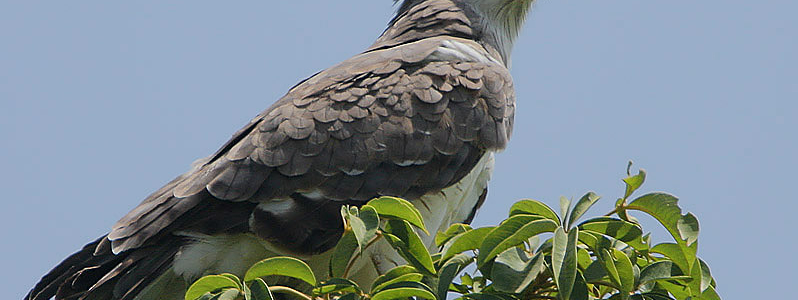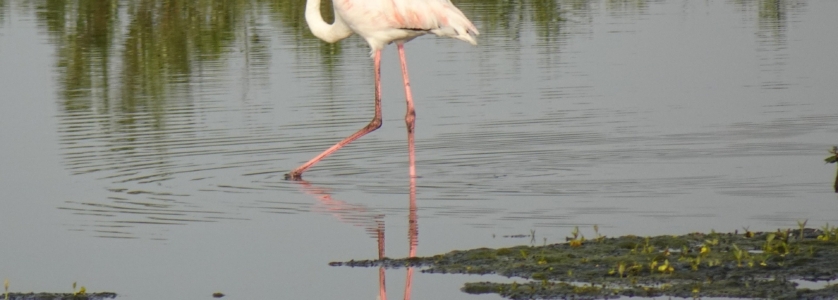

The white headed vulture is one of the birds spotted during Uganda birding tours and it can also be spotted in other countries like Kenya, Tanzania, the Democratic Republic of Congo among others on Africa birding tours.
Scientifically referred to as Trigonoceps occipitalis in the Accipitriforme Order and Accipitridae Family, the White Headed Vulture is characterised with the body length that ranges from 78 to 85 centimeters comprising of a wingspan measuring about 230 centimeters and weighing about 3300 to 5300 grams.
This bird species in Uganda is usually a silent vulture except to the places near carcasses where it utters a shrill chattering with the intensions of defending its food.
The vulture species dwells mostly in dry regions, desert, and in open areas hence found in open thorn bush and Savannahs.
Description of the White headed vulture
The White headed vulture features a dark brown layer of feathers on neck ruff and breast band. It comprises of large brown wings having white edges in median upper Wing coverts and a white line towards the ends of greater underwing coverts.
This bird species is made of black tail and flight feathers along with white throat. White headed vulture is also characterized with white thighs, lower breast and belly.
It is comprised of a triangular unfeathered broad head hence having white down on nape and crown forming a slight crest along with pinkish bare skin around the eyes, fore neck and in cheeks.
The bird species features an orange hooked bill with a black tip and dull orange small eyes.
Both the male and female White Headed vulture are similar in size. The male bird species is characterised with dark inner secondaries while the female has white inner secondaries which do form a white rectangular patch on the inner wing.
Juvenile white headed vulture bares a white head which is brownish at the top and generally dark brown hence having a white mottling on mantle. The underparts are dark and it develops its adult plumage at the age of six years. Therefore, the white rectangular patch appears in female while its 2 years old.
Behaviour of the White Headed Vulture
This vulture species is often seen near carrion on the ground or perched in trees while alone or in pairs. During feeding process, the Whited Headed locate food while soaring high in flight after observing the movements of other scavengers before descending from flight after which it lands on the ground or into a tree.
In most cases, this bird species prefers feeding alone and it stands at the edge of flocks of other vultures species. This vulture species is always the first in finding a carcass and also in landing and feeding. It sometimes walk off with a piece and alone.
During this feeding period, the white headed vulture can eat any piece of carcass apart from the skin including bones and ligaments hence clean feeders having no blood on their feathers. White headed Vulture is also known to hunt live prey for supplementation of its diet and it can be referred to both predator and scavenger.
This white headed vulture mainly feeds on carrion and freshly killed preys including small mammals, flamingos and lizards, locusts, termites and stranded fish.
Unlike other bird species, this vulture prefers prefers freshy killed prey. The white headed vulture keeps good pose and it is nimble on the ground. In fights, it leaps into the air and lash out with talons.
White headed vulture is a very shy vulture which perches on trees during night and roosts in pairs or solitary.
Reproduction of the white headed vulture.
Both the male and female white headed vulture do construct the nest during the breeding period that occurs from May to August which is set on the top of a tall tree such as acacia or a baobab. This nest consists of a large platform sparsely alined with dry grasses and made with sticks.
During the nesting process which is done solitary, the breeding female bird species lays one white egg spotted with reddish brown and lilac. The egg is incubated by both parents for a period of about 43 to 54 days.
The chick is always fed by regurgitation mouth to mouth by both parents at the nest for a period of 115 days. It is still fed for the next six months after developing wing feathers for flight or fledging.
Don’t miss out on this sighting while on Uganda bird watching and birding tours in Africa.
More posts for you

Over 50 excellent reviews on Safaribookings.
 >
> 




